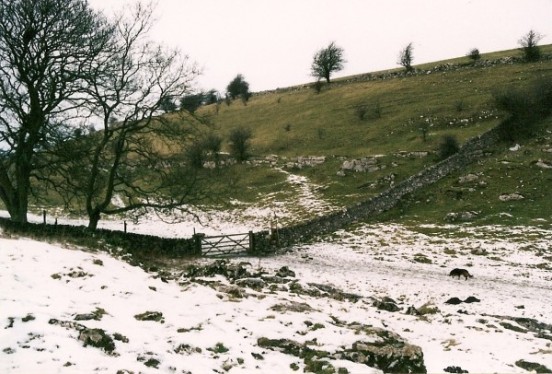English Electric Canberra B. Mk.6 WT207 of No.76 Squadron RAF, crashed around the village of Monyash on the 9th April 1958

| John Peter Fane de Salis | Flight Lieutenant | Pilot | Injured |
| Patrick Henry George Lowe | Flying Officer | Navigator | OK |
The aircraft was being used by Napier on secondment from No.76 Squadron for high altitude testing of the Double Scorpion rocket motor, it was normally flown from Cranfield near Milton Keynes but due to the airfield being closed over the Easter period flying had been moved to RAF Hemswell in Lincolnshire along with its ground support team from Napier. The RAF personnel at Hemswell were only used to re-fuelling and general replenishment services. The two crew had come from different military units, the pilot F/Lt de Salis was carrying out test flying for the Ministry of Supply at Pershore near Worcester and the Navigator F/O Lowe had been seconded from RAF Wittering to Hemswell. F/Lt de Salis had flown 9 previous flights using the Double Scorpion.
The Double Scorpion was a liquid fuelled, using High Test Peroxide and Kerosene, which provided 6,000 lbs of thrust for a unit weight of 216 lbs and was intended to be used to provide enhanced performance at altitude for aircraft such as the Lightning.

On the day of the accident the aircraft had been flown on the short hop to RAF Waddington and back before some servicing was carried out, including replacement of a non-return valve in the rocket motor which had failed the previous day. At 16:00 (BST) the aircraft took off from Hemswell and climbed out in a westerly direction to 43,000 ft, the pilot then turned onto an easterly heading and continued to climb to 45,000 ft where the rocket motor was lit. Over the next 3 minutes 58 second they climbed to 60,000 ft where the motor was shut down. Before the flight it had been decided that if after the first burn any HTP remained this would be used up in a second run to completely drain the HTP tank. They descended to 56,000 ft and F/Lt de Salis selected the rocket ignition which was immediately followed by a rumble and buffeting and a fire warning light for the rear bomb bay where the rocket was mounted came on, before the CO2 fire extinguisher could be operated there was an explosion. The controls went slack and mist appeared in the cockpit associated with cabin depressurization, both the pilot and navigator began their escape procedure. F/O Lowe first jettisoned the hatch above his seat and ejected while F/Lt de Salis operated the snatch unit to pull the control column clear and ejected through the canopy.
The explosion which followed a small but very intense fire caused both wings, tail section and forward fuselage to separate while the centre section was completely destroyed. Over the next few minutes these sections fell to earth around the village of Monyash, the first part was the forward fuselage which was described as being like a torpedo. This fell into Deep Dale to the north of the village. The two wings fell close together some time later, one witness on the ground who had seen the forward fuselage fall stated that it could have been as long as 5 minutes before the wings fell to the ground. The tail fell a little to the south off Derby Lane near Summerhill Farm

We managed to find a couple of small fragments, one bearing an inspector’s stamp and numbering that we have seen on other Canberra parts.
The starboard wing landed in a field a couple of hundred yards away, there is no evidence of this today.


